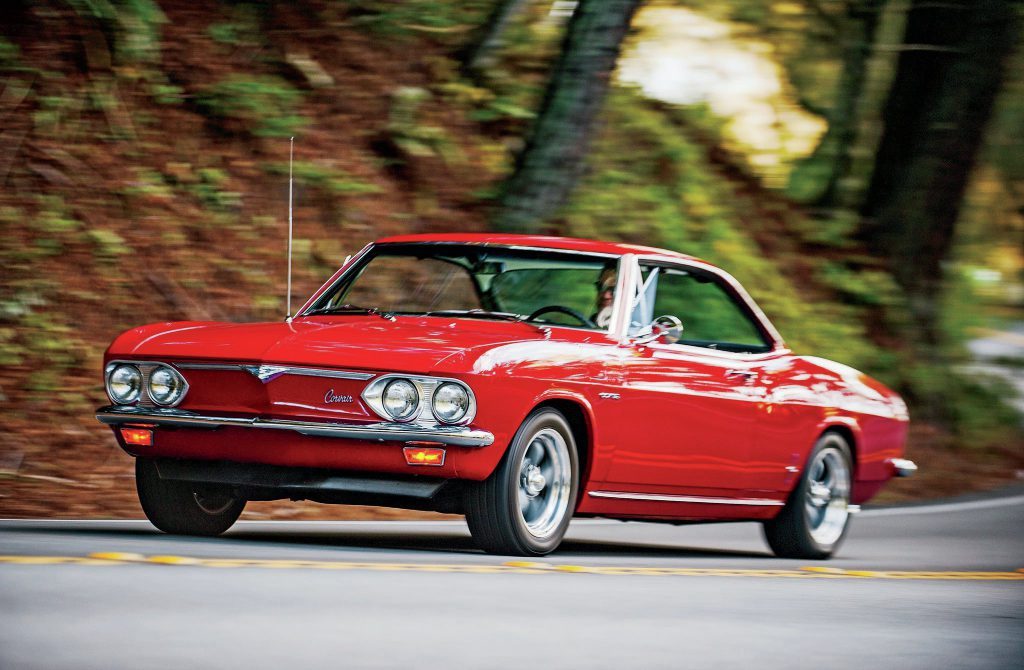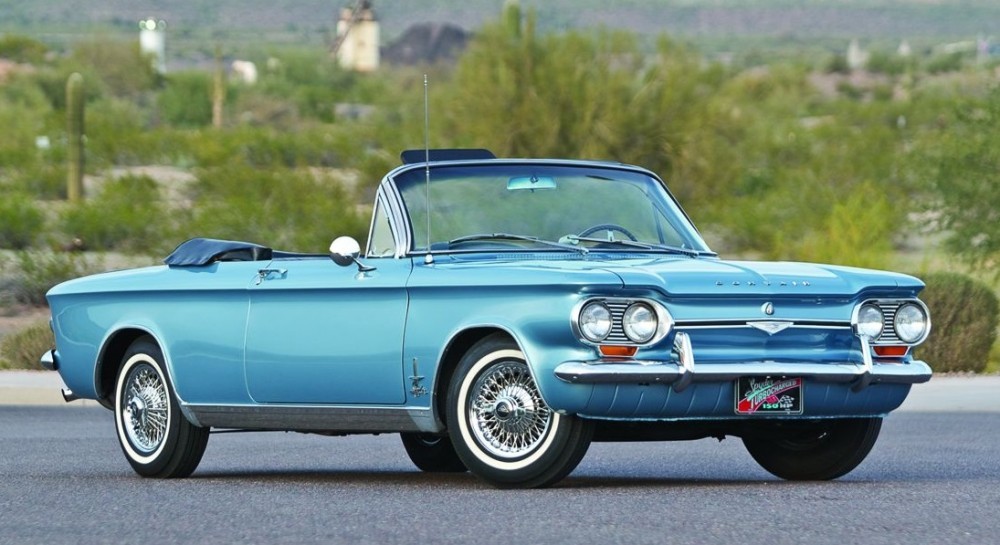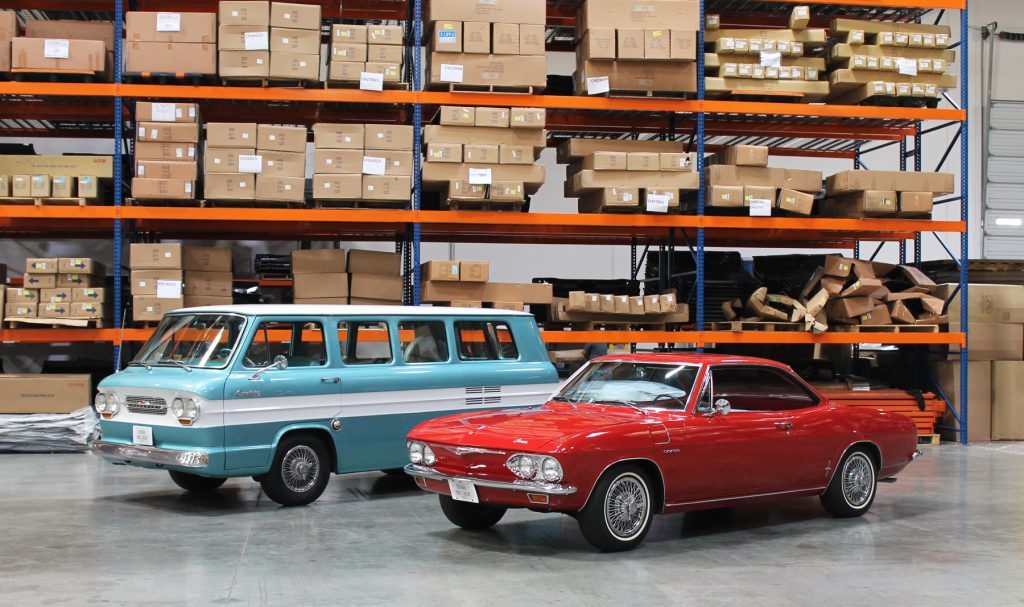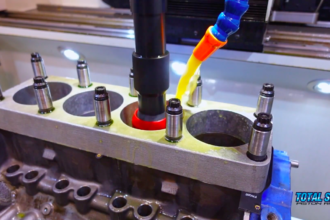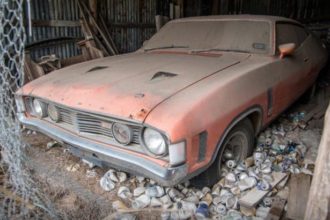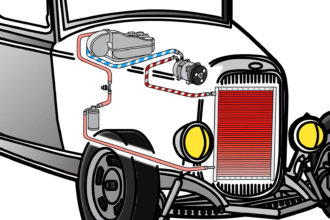Late Model on the move!
Original Photos and Text by: Original Parts Group
Unlike the one-size-fits-all, large-bodied cars produced by the “big three” American manufacturers up to 1960, the Chevrolet Corvair manufactured by General Motors (GM) from 1960 to 1969 was a smaller, unconventional vehicle in many ways. The Corvair was the only USA produced passenger car to employ an air-cooled horizontally opposed six-cylinder engine constructed with many major components made from aluminum. The engine was rear mounted and drove the rear wheels through a transaxle. The innovative Corvair was the first GM car built on a unibody chassis and the first GM car with independent suspension at all four wheels.
Despite the unconventional styling, the Corvair was very well received at the time of its introduction and earned numerous engineering patents due to its innovative construction. Time Magazine put the Corvair on its cover in October of 1959 and Motor Trend Magazine awarded the Corvair its “Car of the Year” award for 1960. Spanning two main generations of manufacturing design, the Corvair range grew to include a two-door coupe, convertible, four-door sedan, and four-door station wagon, as well as passenger van, commercial van, and pickup trucks. At the time, the Corvair’s main competition in the marketplace were imports from Volkswagen, Renault and Fiat as well as the USA-produced Ford Falcon, Plymouth Valiant, Studebaker Lark and Rambler American.
For the 1960 launch, GM produced just over 250,000 2 door coupe and 4 door sedan models in 2 trim levels. Priced at right around $2,000, the new smaller, utilitarian car from Chevrolet was a hit with many Americans. For 1961, Chevrolet produced 329,632 Corvairs and added a 4 door station wagon, a Greenbrier window van, a Corvair 95 panel van and a pickup called the Rampside with a side mounted loading gate.
1964 Corvair Spyder photo by Jeff Koch
Things got more sporty in 1962 with the introduction of a “Monza Spyder” turbocharged package (available only on Monza coupes and convertibles with 4-speed transmissions) that upped the horsepower to 150 from the original max of 102 hp through the use of a turbocharger, new carburetor and a larger oil cooler. The sporty “Monza Spyder” option also included chrome engine accents, special emblems, “Spyder” wheel cover inserts, and a new dashboard layout.
In 1963, the station wagon variant was eliminated, and although there were a few minor trim and interior changes across the line, the 1963 Corvairs were basically identical to the 1962 models. 1964 marked the last year of the “early” style Corvairs and was also the last year of production for the Rampside and Corvair 95 panel van. However, 1964 was also the year the Corvair received a larger 164 CID engine, a transverse leaf spring, revised coil spring suspension, a front stabilizer bar and finned rear brake drums.
1965 was the year the second generation Corvair arrived on the scene. Although 1965 was the last year of the Greenbrier window van, the introduction of the new late model with a fully independent suspension replacing the original swing axle was the bigger news. With new styling and a wealth of mechanical improvements, the new Corsas offered a turbo option of 180 hp along with a 140 mph speedometer, 6,000 rpm tachometer, a cylinder head temperature gauge, a manifold vacuum/pressure gauge and a new fuel gauge.
Buyers could order a 4 carburetor-equipped 140 hp engine in any model, but the 180 hp turbo option was available only on the Corsa. Late model Corvairs also received an improved heater system, larger brakes, a stronger differential, and a new alternator replaced the generator. Chassis refinements for 1965 included a Z17 performance suspension package with a quick ratio steering box that produced major improvements in handling.
1967 saw a loss of factory interest in the Corvair, due in part to the introduction of the Camaro. The Corsa model was eliminated and 1967 was also the last year for the 4 door sedan as the line was reduced to the 500 and Monza Hardtop Coupes, the Hardtop Sedans, and the Monza Convertible. Although Chevrolet still marketed the Corvair in 1967, little effort was put into advertising and sales fell drastically. As a result, just 27,253 Corvairs were built for 1967.
Sales continued to fall and total production for 1968 dropped to 15,399 cars. 1969 saw only 6,000 cars produced. By this time the fate of the Corvair was sealed. Negative press about the handling of the Corvair in Ralph Nader’s book “Unsafe at Any Speed” did not help. Although GM hired race car drivers and industry experts to declare that the Corvair was safe, the damage was done.
A 1972 report from the National Highway Safety Administration later exonerated the Corvair’s handling, but the report was issued too late to save the marque and the line faded into the history books. In the end, it was probably a combination of cheap gas and cheap horsepower that did the most damage to the Corvair line. In 1969, gas was less than 40 cents a gallon, the big V8 muscle cars were on the horizon and consumers did not care much about gas consumption. Today, Corvairs enjoy status as collectible classic cars with good looks and a lot of technical interest, a combination that indicates their values will likely only rise in the future.
At Original Parts Group, we will soon offer thousands of 1960-1969 Corvair parts and accessories in our newest full color catalog. It will feature a wide range of items including sheet metal, trim, interiors, engine parts and the hard-to-find pieces that result in a show-winning restoration. Shop online and be sure to pre-order your OPGI 1960-1969 Corvair parts catalog here.

Rick Seitz is the owner and founder of AutoCentric Media, the parent company to Timeless MuscleCar Magazine, and has a true love and passion for all vehicles. When he isn’t tuning, testing, or competing with the magazine’s current crop of project vehicles, he’s busy tinkering and planning the next round modifications for his own cars.








